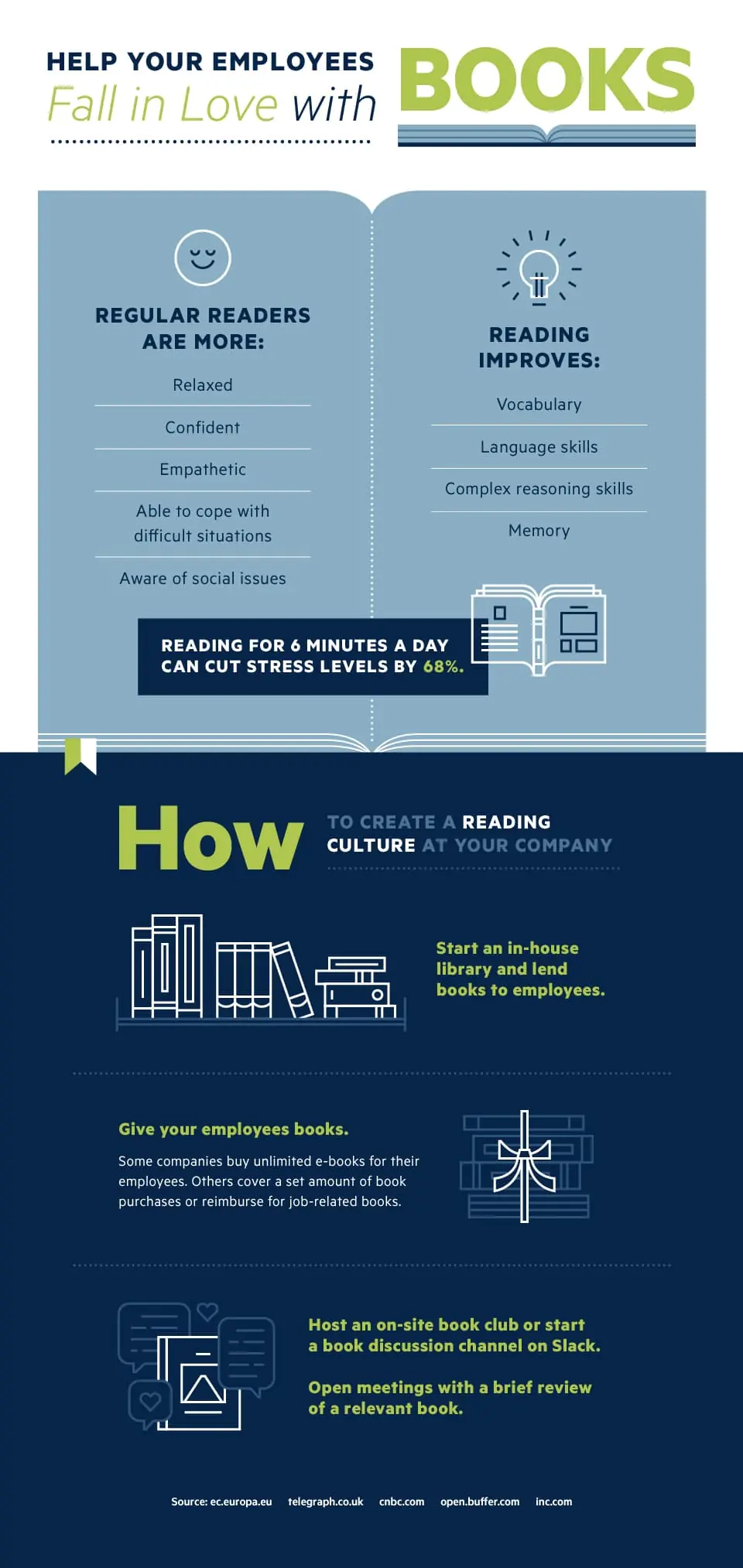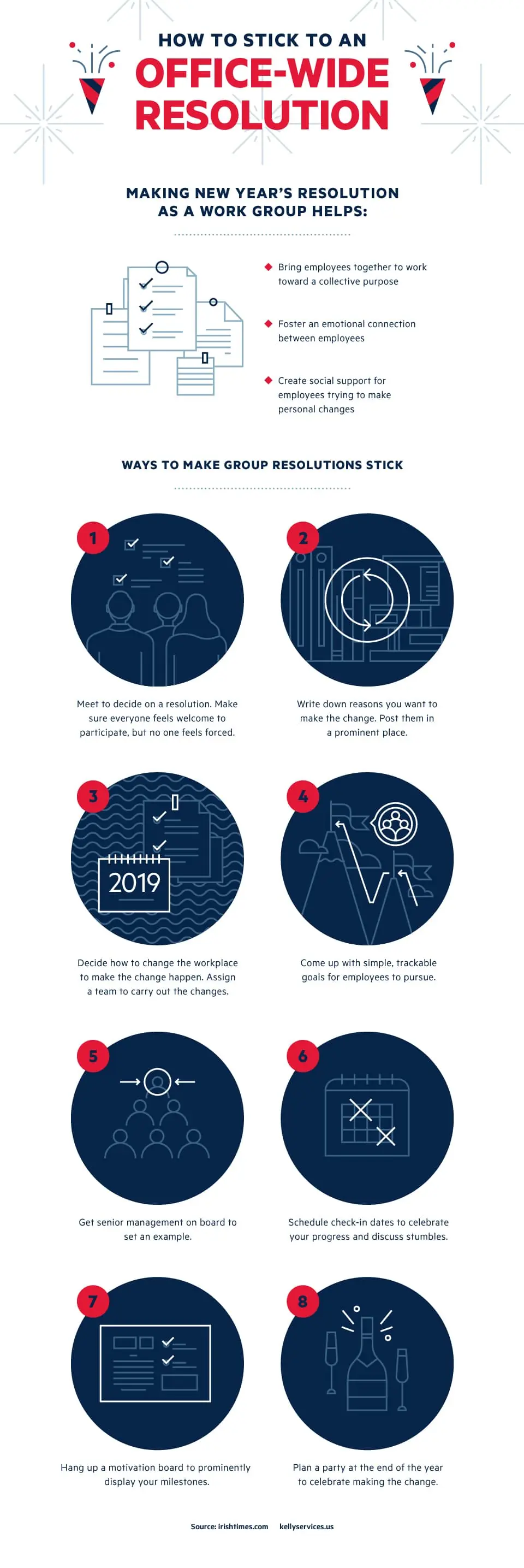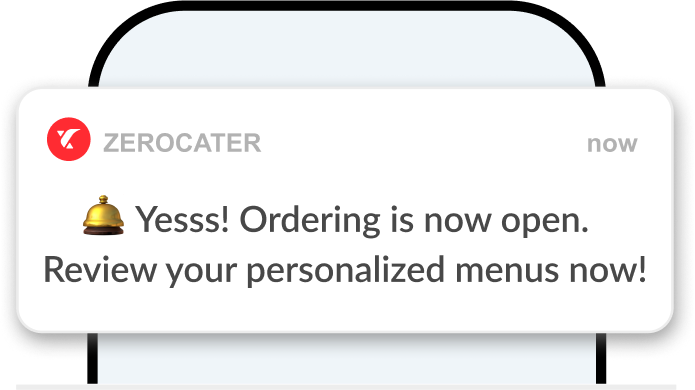January dawns with optimism and good intentions. Unfortunately, most people ditch their New Year’s resolutions by June. But you want your employees to triumph. After all, happy, healthy employees are more engaged employees. They’re more creative, collaborative, and productive. And they make more sales and provide better service to customers.
Of course, you can’t force your employees to kick cigarettes or sign up for a CrossFit class. Nor can you make them get their finances in order or read more, even if they desperately want to. But you can help them succeed. Your employees spend a third of their lives at work. The workplace has a major impact on their health and quality of life. Keep reading to learn how you can tweak your work environment and culture to help your employees achieve their resolutions this year.
Get to Know Your Employees
Not sure whether your employees made New Year’s resolutions? Ask! Nearly 70% of managers find it challenging to chat with their employees. But employees want their managers to listen and care about who they are. According to a Gallup study, employees who have regular meetings with their managers are three times more likely to be engaged at work. Chances are, many of your employees made the same New Year’s resolutions this year.

Focus on financial health
Chances are, quite a few of your employees want to save more money. Almost half (42%) of employees have a hard time paying their monthly household expenses, let alone socking money aside. One third of Americans have less than $5,000 saved for retirement. Starting a savings plan can open up opportunities, relieve anxiety, and boost happiness for some.
And—as an added bonus—when your employees improve their finances, it may benefit your company. Personal-finance issues have a big impact on work performance. Nearly three-quarters (72%) of workers say they’re stressed about finances some of the time. And nearly one-third (31%) of those who are struggling say financial stress prevents them from doing their best at work.
People who are financially stressed are four times more likely to suffer from fatigue, headache, and depression. Thus, by helping your employees get their finances on track, your company may be able to boost productivity and decrease rates of tardiness and absenteeism.
Here are four ways to help your employees flourish financially this year:
- Host on-site workshops about budgeting, getting out of debt, saving money, investing, and planning for retirement.
- Sponsor an employee assistance program to offer free debt counseling to your employees.
- Allow employees to automatically deposit part of their paychecks into a savings account, and train them how to set it up.
- Provide a retirement savings account and make the maximum savings percentage the default.
Provide healthy food
Your employees may have a love-hate relationship with the donuts, cookies, and birthday cake in the office, not to mention the soda, chips, and candy bars tempting them in the vending machine. Most of the free food people get at work isn’t healthy, according to a study by the Centers for Disease Control and Prevention.
Improving your workplace food options may improve your employees’ health and boost their productivity. What and when people eat has a big impact on their ability to concentrate. Plus, your employees will probably welcome healthier food options. At companies that offer wholesome food options at meetings and events and in cafeterias and vending machines, 97% of employees respond favorably.
Here are five ways to help your employees eat healthier at work:
- Contract with a company that offers healthy snack options, such as dried fruit, nuts, seeds, whole-grain crackers, and nutritional bars.
- Stock the break room with healthy snacks such as fruits, veggies, nuts, hummus, and yogurt. Make these easier to access than the chips and cookies, for instance, leave fruit and nuts on the counter or communal table.
- Provide catered lunches with plenty of healthy options, whether you offer daily lunch or host occasional office meals.
- Plan a once-a-month birthday party and celebrate all the employees born that month with a catered meal or healthy refreshments, as well as cake.
- Host group cooking classes or healthy pot luck at the office. (Cooking is a great way to improve health).
Promote active living
You likely have employees striving to lose weight, get in shape, or quit smoking. That’s great news because transitioning to more active lifestyle helps people improve their quality of life, prevent major health conditions, and boost longevity.
Plus when your employees get healthier, your business may get healthier. On average, fit and active people are more productive and engaged employees. As an added bonus, healthier lifestyles usually equate to lower health-care costs.
Don’t make your employees go it alone. Social support helps people create and keep healthy habits. In one study, 66% of women who completed a weight-loss program with friends kept the weight off, compared to only 24% of women who completed the program alone. People are more motivated to exercise when their peers exercise. And it’s easier for people to quit smoking if they hang out with non-smokers.
Here are seven ways to encourage your employees to become their own social-support team for healthy living.
- Offer free classes to quit smoking.
- Sponsor on-site exercise classes.
- Create a lunch-time walking club (and show up to take part).
- Give your employees pedometers and do monthly step challenges. Award the winners with a gym membership or workout gear.
- Provide employee bike storage and a place to change clothes.
- Introduce dynamic sit-stand workstations and encourage employees to get up and move more during the day.
- Form a company softball, soccer, volleyball, or basketball team, and/or a hiking club.

Encourage reading
Regular readers are more relaxed, have higher self-esteem, are more empathetic, cope better with difficult situations, feel closer to their friends and families, and are more aware of social issues, according to a U.K. study. A more effective stress buster than listening to music, going for a walk, or drinking a cup of tea, reading for only six minutes a day can cut stress levels by 68%.
Reading also improves vocabulary and language skills and improves memory. Can you imagine all the ways it would benefit your company to have a team of voracious readers on board?
Here are four ways to encourage your employees to read more this year:
- Give them books. Tech company Buffer buys every new employee a Kindle and allows unlimited book purchases. Other companies cover a set amount of book purchases per month or reimburse employees for job-related book purchases.
- Start an in-house library and lend books to any employee who wants to read them.
- Host a monthly or quarterly book club or start a channel on Slack where employees can discuss books they’re reading.
- Open your meetings with a brief review of a book you’ve read recently.

Follow up with a team- or office-wide resolution
You probably won’t be able to make all the above changes at your company. So how do you decide where to start? If most of your employees are pursuing the same resolution, you could make it your team- or office-wide resolution for the year—even if you make the resolution after January 1. For instance, there’s a good chance many of your team members want to get fit, lose weight, or eat better this year. Why not resolve to become a healthier office? Just remember, it’s easy to make a resolution, but it’s harder to actually follow through.
Use these tips to make team- or office-wide resolutions stick:
- Meet to decide on a group resolution. Make sure everyone feels welcome to participate but no one feels forced.
- Once you pick a resolution, brainstorm why you want to make the change, write the reasons down, and post them in a prominent place.
- Decide on ways you can change the workplace, for instance by replacing junk food in the break room with healthy snacks, to make your resolution easier to achieve. Assign a person or team to carry out the changes.
- Come up with a handful of simple, trackable goals for people to pursue, for example walking 8,000 steps a day.
- Get senior management on board to lead by example.
- Schedule check-in dates to celebrate your progress and discuss any stumbles.
- Hang up a motivation board in a prominent place and post your success milestones.
- Plan a party for the end of the year to celebrate the change you made.

Conclusion
New Year’s resolutions can sometimes have a bad rap, but that doesn’t have to be the case for your office. It’s true that many people who make resolutions fail to create lasting change. Even so, you’re far more likely to succeed when you make a resolution than when you don’t. In one study, 46% of resolvers kept their resolution for six months, whereas only 4% of people who tried to make a change without a resolution succeeded that long. Long term, people who make resolutions are 10 times more likely to succeed than those who don’t.
Your team may fare better than most because they have you on their side. By supporting your employees in the workplace, you’ll help them nail their New Year’s resolutions. Meanwhile, you’ll foster a healthier and more engaged and productive workforce.
 to plan your catering
to plan your catering

